THE CROFT sonder



Croft/Adam Liu
1-2: Solitude 3-4: Insomnia 5-6: My Personal Style 7: Fashion Memento 8: The Bristol Lookbook 9-10: Home Cooking 11-12: The Food Review: Rock Salt
13: The Importance of Being Selfless 14: Sonder 15-16: Emasculate 17-18: Travel to the Roots 19-20: We’re Not Really Strangers

Welcome to Sonder, our latest edition of the Croft. This time, we’re taking the highly individual and reframing it as comfortingly universal, by pondering on the shared details and complexities of our daily lives.
It’s easy to begin to feel isolated and alone during winter; we hope this issue reminds you that whatever you’re feeling at the minutes, you’re very likely not the only one who’s feeling it.
This issue also serves as a reminder that, whilst we are the centre of our own lives, we are not the centre of the universe, so let’s look out for eachother and encour age a little more empathy.
Thank you, as always, to our incredi ble creative and editorial teams, we are consistently blown away by your effort, talent and hard-work.
We hope you enjoy x
Emily & Nicole
Noun. SONDER (uncountabl(neologism) The profound feeling of realizing that everyone, including strangers passing in the street, has a life as complex as one’s own, which they are constantly living despite one’s personal lack of awareness of it.




















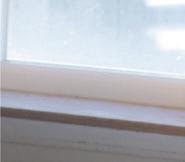

1:08am
It’s been an hour since the marathon began but I am definitely not a trained athlete. The realm of darkness I surround myself in to induce the slum ber I so desperately crave is proving to be fruit less. The sound made by oscillating blades of the ceiling fan compete with the voices in my head in an attempt to capture my undivided attention, but I am numb. Numb to the noise, numb to my thoughts, numb to it all. Unable to see, feel or hear yet I still feel like a helpless victim losing a battle that was never mine to fight.
3:12am
The palpitations in the cavity of my chest ampli fy as my mind begins wandering to perimeters beyond its ability. The carbon black atmosphere beyond my shut eyelids is a breeding ground for my unforgiving brain. A whirlwind of memories began to flood my being ; both the good ones and the bad ones and are accompanied by the emo tions they evoke.This walk down memory lane feels more like a run, or rather a chase - as the voices in my head analyse and scrutinise my every interaction from adolescence to adulthood. The visuals are spectacular ; resembling that of a 90s film and it feels as if I am watching a movie of my life with clips that replay over and over and over again. But all I beg for is the ending credits to play.
4:07am
If my body is truly a temple, as most religions preach, would it not be simpler to achieve peace? I would consider my temple to be one with the poorest of interiors that lacked consultation prior to construction. My imperfectly-structured mind replicates a house of mirrors I am unable to nav igate through, with an opportunity for reflection at every corner. I try to escape but it lures me clos er, the sensations amplify and course through my veins. The effects are no longer in my head, they gradually escalate to a physical condition at this point. My muscles tighten as my hands with fin gertips sore from the constant fidgeting begin to vibrate. The suffocating grip on my throat releas es nothing but a silent scream, one that is inaudi ble and ineffective.
Five hours in and it no longer feels like I am bat tling a disorder but rather an individual. I cannot see him but his presence is known as he lingers at the edge of my bed. He watches me throughout the night, knows my weaknesses and thrives on my vulnerability. His embrace is cruel and cold yet he yearns to keep me awake for company, a rather confusing concept if you ask me. He keeps me detained, like an animal in a cage with no au tonomy. He who is a master of sham ; gently ca resses my flesh as I begin to drift into sleep only to unleash his true intentions in a matter of min utes. His wrath is harsh with actions that leave me paralysed and contemplating if fighting him is futile. He is in control of my body, mind and soul and I am nothing more than a hollow, empty, human-shaped vessel.

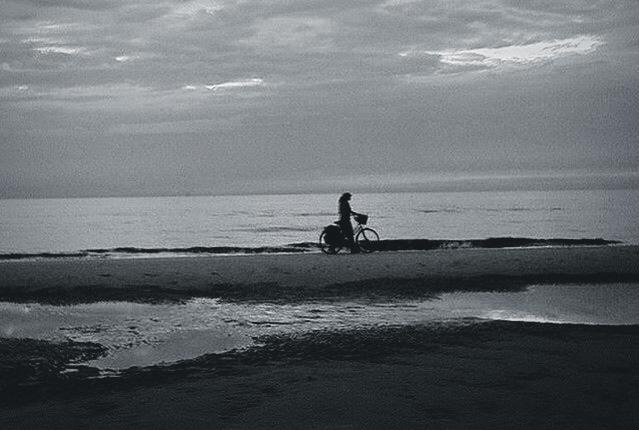 Editors in Chief: Emily Fromant and Nicole Quy
Sub-Editor: Sophie Robertson Acolet
Editors in Chief: Emily Fromant and Nicole Quy
Sub-Editor: Sophie Robertson Acolet
To label insomnia my enemy feels like a reach, like I am in search of a comforting self-pity remedy. It has been a tumultuous seven hours that have finally come to a temporary end. The weight of my eyelids and my pulsating head ache are evidence of the night that has con sumed me. I am inclined to curse this feeling that plagues me night after night while another part of me pleads with the cruel figments of my imagination to allow me a period of rest. But those are decisions to make in due time as the sun emerges and my day begins. There is not much to do besides resume the live-action mas querade that occupies my hours before I meet him again.
Words by Charmaine Annabelle Mathew

When asked to define my style, my mind raced through every outfit I wore this week in an attempt to collate all the looks into one adjective. After flipping through 90s, preppy, streetwear, baggy, chic, gorpcore, I found that there wasn’t a single word; it’s not like I’m a cartoon character putting on the same outfit every day. So, rather than trying to pinpoint what my outfits have in common, I gave thought to the process of how I pick them each morning, and where this started from.
I wore a uniform from the age of 6. Getting dressed throughout school was a repetitive process: shirt, tights, skirt, tie, jumper and blazer. Secondary school was either spent bundled up in this business attire (I still don’t understand the need for the military-like uniform restrictions), or squeezed into a pair of Joni jeans on the weekend. Don’t get me wrong - I still cared about what I wore, but fashion wasn’t something expressive like it is now. Many of my clothes came from Zoella’s ASOS links under her haul videos. Maybe I could put this down to wanting to fit in at the awkward age of 14. Either way, there wasn’t a whole lot going on with my style until finally I left secondary and moved to college.

Year 12 saw some of the most questionable outfits - thinking back to what I wore makes me physically cringe at times. But, without going through that phase of my life, I would not have learnt what works on my body, and what (definitely) doesn’t. During these years of college, I discovered the world of Pinterest and the ‘streetwear’ section of the vogue website. I also became obsessed with Haute-Couture and high-end designers (obviously not to buy, just to look at online) . This inadvertently changed my style for the better, and subconsciously I was accumulating all the colours, patterns, and silhouettes I liked on the runway, and working them into my style.
This is where most of my inspiration comes from today - looking at influencers and celebrities wearing high end clothing and figuring out how to replicate that in some way or another. People I watch out for tend to change every six months, but at the moment I have my eye on Ruby Lyn, Bella Hadid, and anyone who makes it onto Vogue’s Streetwear photography collections. If you believe that fashion is a way to express yourself, like I do, then finally feeling happy with my style reflects my feeling more comfortable in myself. The mishmash of styles I find myself wearing day-to-day shows that while I’m still figuring out who I am, I am happy with that. In terms of building a wardrobe I love, I’ll make sure to have basics at all times, blue jeans, baggy black trousers, white and black tops. Every once and a while I’ll invest in a statement piece; this month it was a maxi-length tartan skirt. Resisting fast fashion trends has allowed me to appreciate clothing more and figure out how I want to dress. Investing time into the world of fashion, whether it be shopping, looking on social media for inspiration, or reading Harper’s Bazaar, and experimenting with what I see, is how I reached my style today.
WordsBySophieBrasseyThere were six of us altogether. All aupairs for Parisian families, sipping wine on the balcony of a stunning apartment in the 15th ar rondissement, as though we were wealthy homeowners ourselves. The living room was large and lavished with ornaments the host family had collected from their worldly travels and the furniture looked like it had been staged by professionals for a magazine.
I had chosen some faded black skinny jeans and a silk cam isole top, with lace trim, in kha ki green. I’d like to be able to say I made it slightly better with an over sized blazer or some jewellery, but sadly that was the lot.
Whilst not the most fashionable outfit going by the official trends, it gave off a somewhat ‘put togeth er’ look on me and it was a truthful resenta tion of what I felt com fortable in at the time.

I’m around 5ft 6 and would comfortably describe myself as a healthy midsize. I handed my clothes over to the smallest, most petite member of the group and watched as they drowned her slight frame. She looked – and this comes from her – as though she had “raid ed mummy’s wardrobe”.
Whilst our chef for the night cooked, I changed into my outfit. A tiger print, collared, maxi dress from ASOS. It has a V- neck plunge and has been sewn to create built in cups for your boobs.
It’s a flattering dress to say the least and I completely fell in love with it. As someone who had ac tively avoided wearing anything too loud for fear of not being able to pull it off, it felt empowering to suddenly be in such a bold pat tern… and liked it. We spent the rest of the night doing fashion shows, galivanting around the place sporting our new outfits and guzzling countless glasses of wine with the stunning dinner that was prepared for us.
These girls, eclectic in both their style and personalities, became some of my best friends.
The girl its fun print. But more than anything, I love that it reminds me of a group of peo ple, and a place that has become so intrinsic to who I am today. Its laughter and memories are woven into the fabric, and I get the priv ilege of keeping it close. arly see each other and stay in touch. We survived and thrived in a foreign country together, in the midst of a global pandemic and that night of hilarity is just one example of that.
The girl whose dress I was wearing that evening kindly gifted it to me at the end of the night, and it has become a staple item in my wardrobe. I love how easy it is to style and how it instant ly elevates my mood with its fun print. But more than anything, I love that it reminds me of a group of people, and a place that has be come so intrinsic to who I am to day. Its laughter and memories are woven into the fabric, and I get the privilege of keeping it close.
The Croft/Coby Travis Lazaroo
STYLE.
Editor: Ella Crabb
Deputy Editor: Molly Grogan
Digital Editor: Mia Flook
Sub-Editor: Amy Marshall
WALK THE LINE Black Kohl eyeliner goes a long way in Bristol. Nobody will know whether it’s from the night before.
FAUX FUR FUN Afghan and Penny Lane coats dominate winter attire in Bristol. Easily sourced in Charity shops and on Depop, they’re practical and stylish.
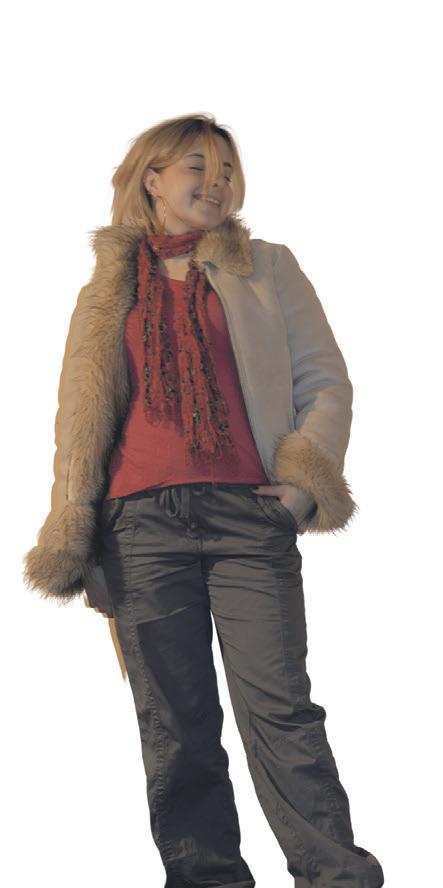
SKY HIGH SHOES Think Quad Docs or Buffalo platforms, elevate your look by elevating your height. Good for keeping feet dry and out of puddles, and for stomping around.

The formula for all nights out. Skirt and jumper, crop top and jeans.

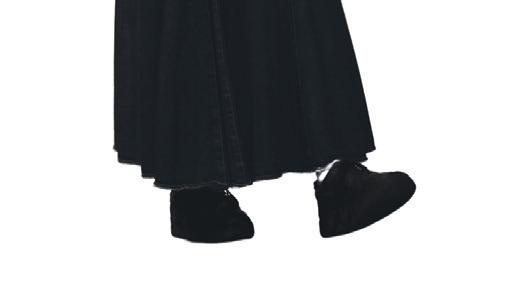

SCARF GALORE A skinny, crochet, or brightly-coloured scarf is a must-have for any Bristol wardrobe.
THE TRUSTY TOTEBAG Any Bristolian will tell you that they have more totes than they know what to do with.

Every famous city has that ‘thing’, that look that makes it recognisable. It tells a lot about a place. The people that populate it, their attitude, their day to day activities, the weathers they brave, the amount of walking they do. Ours is a student city, a sustainable city, a young city. And hills are to Bristolians are what the cobbled pavements are to the Parisians. We’ve dissected what fashion trends and pieces make our locals. A cheat-sheet, if you like.
Sonder is the feeling of realising that strangers passing by have a life as complex as one’s own, and food seems a way of expressing these complexities. In this article, Maya explores her cultural and religious identity through a dish that brings her comfort: chicken soup.

Food, for many, is one of the most tangible ways to feel connected to your culture, a dish passed down through generations, a uniting flavour bonding a group of people through a shared love of traditional dishes, a smell that is able to immediately transport you to a place and time; some foods just feel like home. For me, no food encapsulates the feeling of home more than my mum’s chicken soup. I’m fairly certain this is the same answer you would get from any Ashkenazi Jewish person, and I’m equally sure that they would all insist that their mum’s recipe is, in fact, the best. Chicken soup holds its place as one of the most iconic dishes in Jewish culture, though variations on the dish can be found across the world, dating back to ancient China. The dish’s popularity largely came from the strongly held belief in its medicinal properties, which still ring true today, with it often referred to as ‘Jewish penicillin’. Although this nickname came about after the Second World War, this idea has been circulated since the 11th century, when Jewish philosopher Maimonedes encouraged pregnant women to eat chicken soup on account of its healing properties. Maimonedes went as far as claiming it to be a cure for both asthma and leprosy and while these claims are obviously not based in scientific fact, recent studies have found chicken soup to hold some efficacy with curing a common cold. The smell of chicken soup would fill the house towards the end of every week, with the process beginning on Wednesday evening - the soup would sit reducing on the hob all of Thursday, meaning we had to wait two long days until we were finally able to enjoy the fruits of our mothers labour on Friday night.
My sister exercised her maturity through her dedicated role of chicken soup strainer; I doubt her job of holding a colander in place had much impact on the final flavour of the soup but she was always sure to remind me, and any guests, of her involvement in the process. Although this was a dish traditionally reserved for Shabbat, we didn’t feel the need for a specific occasion to enjoy a bowl of chicken soup. An extra batch was always made and stored in the freezer for bouts of illness or, at one stage, when my older sisters had taken to refusing breakfast before school, in typical Jewish-mother style refusing to let her children leave the house on an empty stomach, my mum would serve it to them at eight in the morning, and they would gladly eat it, because no one would turn down her chicken soup. In fact, its importance as a food is felt so deeply that multiple members of my family have, at some point or another, been vegetarian, with the sole exception of chicken soup.
Chicken soup became a way of bringing home to wherever we were. As a child I remember watching my mum pack tupperware full of soup to bring to my dad while he was in hospital, and in more recent years when I begin to miss home at university it is the first thing I think to make.
Like most family recipes, I don’t think a written copy of this recipe exists; less because of wanting it to be kept a secret, more due to the fact that so much of it relies on instinct. My mum could probably make this with her eyes closed, and while every batch may be minutely different, I’ve never known her to make one that wasn’t delicious.
Editor: Hannah WrightDeputy
Digital
Editor: Saiba Haque Editor: Lara Inglis JonesSub-Editor:
Emma WithamBefore leaving for university, my mum sat me down for an invaluable lesson in chicken soup. Although it is a long process, it is relatively hands off, all taking place within one pot - preferably the largest you own. Over time, she has adapted her recipe from using whole chickens, to opting for only wings: the flavour of the broth comes from the release of collagen which is stored within the bones of the chicken, making the wings the ideal base for this soup. The wings, along with onions, are covered in water and brought to the boil, skimming off the grey bubbles that rise to the surface. Once boiling, parsnip, swede, carrots and seasonings are added to the pot. This is then left to simmer for several hours, after which stock cubes (specifically Telma brand) and tomatoes are added - a less traditional addition, but one that elevates this soup in indescribable ways. This is left to simmer again for a few hours before turning it off the heat and leaving it to sit overnight to allow the flavours to fully develop. The next day, the carrots and chicken wings are removed and saved, while the rest of the soup is sieved and the remaining vegetables discarded. The chicken is shredded off the bone and returned to the broth along with the carrots. After this the broth is ready to be served, ladled upon thin egg noodles known as lokshen and, crucially, topped with lashings of what are lovingly referred to in my family as ‘bits’: the dangerously addictive croutons made specifically for chicken soup.
Chicken soup holds a special place for me, not just due to feelings of nostalgia and homeliness, but also through the connection I feel to my heritage through this dish. Food can be such a beautiful and creative way to feel in touch with your culture, honouring traditions that have existed long before your time, and ensuring they continue. Often religious traditions can be discarded as society progresses and these traditions become outdated - food is a way we can maintain this relationship with our cultural and religious origins.


Eating well and staying sophisticated without having to take out a mortgage often seems an unfeasible task in Bristol. Enter Rock Salt, which not only manages to do one, but excels at both. Already a well-established favourite of locals and students alike, it’s not often you’ll be able to get a table without pre-booking. Its popularity always ensures a bustling but relaxed atmosphere which will leave you blissfully unaware of your worries and work while tucking into all its delectable delights.
If you couldn’t already tell, I absolutely loved my visit to Rock Salt. When I first heard it was a Chinese and Indian fusion, I found it hard to believe how that could possibly work as they are two vastly different cuisines, but, spoiler alert, it does. They keep both cuisines separate on the menu but you are still able to mix and match if you’re feeling a bit more adventurous. Having now been three times since the beginning of the year, I have tried both the Indian and Chinese parts of the menu. This review focuses on my recent visit where I opted for Chinese. However, I can also vouch for the quality of the Indian food they serve here.
Having pre-booked online, my party of four was warmly welcomed in by staff and seated at a table near the window overlooking passers-by on Cotham Hill. Being a fusion between Indian and Chinese, the interior is not typical of a Chinese or Indian restaurant but instead has its own Bristol-esque design by displaying graffiti on the wall and boasting a plethora of plants and colourful cushions. We originally planned on getting cocktails thinking they were £5 for students, but we were disappointed to find it was only the negroni which was £5! Not being big fans of a negroni, as many students aren’t, we ended up not getting a cocktail. If you are a big fan of negronis then this is definitely the place for you, however I think student deals on the other cocktails would definitely be more popular!
For my starter, I decided on the ‘Cauliflower Manchurian’. I knew this was risky and would either be tasteless and boring or com-

pletely delicious, and luckily, it was the latter. The cauliflower was beautifully seasoned in ginger, garlic and soy sauce with a crispy coating, original without being overly pretentious. My friend’s ‘Malai Broccoli’ was another risk that was, unfortunately, relatively lacking on flavour; I was silently grateful I didn’t order the broccoli myself.
Editor: Hannah Wright
Deputy Editor: Saiba Haque
Digital Editor: Lara Inglis Jones
Sub-Editor: Emma Witham
For my main course, I opted for the ‘Chicken Noodles’ which I actually had on my first visit to Rock Salt and loved so much I just had to get them again. This is where the prices are really excellent. You get an absolutely huge portion for only £7, and although a seemingly simple dish, the flavour is just not something most would be able to replicate at home. It’s the perfect balance of sweet and savoury and is packed with lots of veggies and chicken. It would be worthwhile just coming to Rock Salt for the noodles, you really don’t need much else. Too many restaurants are overly ambitious and try too hard to make their dishes stand out, Rock Salt’s are the perfect example that sometimes simple is best.
With my bill totalling £14, I felt relaxed and fulfilled without the guilt of having spent far more than I should have. Its location on Cotham Hill puts it up against tough competition such as Pasta Loco and Bravas. Both these restaurants are great, but slightly outside most students’ budgets. So next time you’re on Cotham Hill, pop in to Rock Salt and give it a try - you won’t regret it.
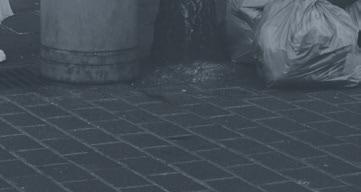


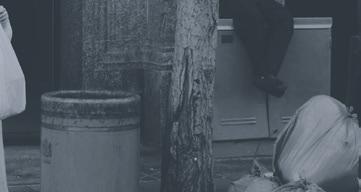

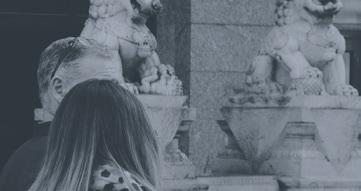



In a recent interview for the upcoming release of Black Panther 2, Martin Freeman reflected on his time working with the late Chadwick Boseman, who tragically died in 2020 after a long, and markedly private battle with cancer. Among other things, Freeman mused how the death of his friend starkly brought to his attention that we may not always be aware of the hardships and battles others endure privately. With an almost epiphanic tone, Freeman expressed how Boseman’s story reaffirmed within him the importance of treating others with unfailing levels of respect and kindness, because you never really know what someone might be going through.
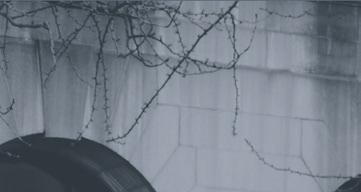
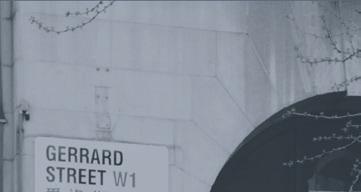
Freeman’s personal reflections here speak to the wider importance of selflessness. By nature, we as human beings carry out tremendously complex and full lives. Often so caught up in our own lives, it is easy for us to forget that there are nearly 8 billion people out there with lives equally as abstract.

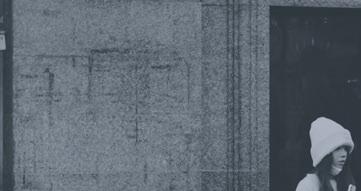



Colloquially labelled as ‘random acts of kindness’, small efforts like smiling at a stranger; offering to help someone with their shopping bags; or even paying someone a compliment are simple things we can all do, that require minimal time and effort but may uplift a stranger’s day when they need it most. I think we can all agree that small deeds like this not only restore your faith in humanity and others but are also great self-esteem boosters.
A viral TikTok trend has recently surfaced affirming just how impactful these random selfless acts can be. The worldwide tag ‘notes to strangers’ is flooded with videos which show people passing notes to fellow strangers. The notes range in uplifting and reassuring quotes, one reads: ‘your life matters, forget anyone that’s made you doubt that’. What is, however, so soul-stirring about this trend is the reactions of those who receive the notes. Some are really emotional, visibly taken aback both by what they have read and by this very notion that someone has gone out of their way to try and lift them up




It is a rather beautiful thought, then, that we all possess the potential to positively impact someone else’s day. As the world attempts to navigate its way out of and through an exceptionally fraught few years of COVID-19, political chaos, and environmental anxiety, whilst we don’t all hold the power to change the lives of the billions, we can all strive to deliver positivity to just one person. In doing so, we are actually making ourselves feel better too. The doubly wonderful truth about selfless acts is they have been proven to induce a feel-good factor not just in the receiver, but also in those that carry them out. They’re no-brainers really, so next time you like someone’s jumper or notice their smile - tell them. These words of kindness may go a lot further than you initially envisioned.

It’s a Saturday night and I look around as I and my four flatmates squish on our uncomfy sofa. A laptop has taken up residence on the coffee table for the large part of the afternoon. It has gone from playing Real Housewives to a programme about cocktails. This is the start of round two of our coming of age. The Twenties.
I have just woken up and the internal questions have started. What am I going to do with my life? I don’t know. How should I structure my day? I don’t know. What on earth should I make myself for dinner? I don’t know. Will I know the answer to these questions at





















the end of my 20s? Probably not. I am trying to find a new balance in ‘semi’ floating. Trying to mix the two narratives, ‘You’re only in your 20s’ – the time to make mistakes, have fun and be selfish – and ‘You’re in your 20s now’: time to think about your future, budget your spending and get your life together. My mum once told me, as I panicked about who I was going to be, ‘I still don’t know what I want to be when I’m older’. Maybe this line was just a throwaway for her; but I have taken comfort in it. I sometimes forget that my parents or important people in my life have whole parts of their life that I’m not privy to. Maybe it is scary that our lives may never feel whole or complete. To me it’s reassuring. All those people who inspire me or guide me. There is a word for this.











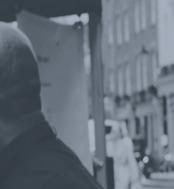



It’s sonder – the realization that everyone around you, even strangers, have complex lives. And they must constantly be dealing with those complexities, whether you’re aware of them or not.


















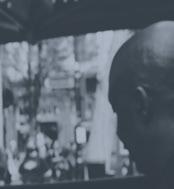

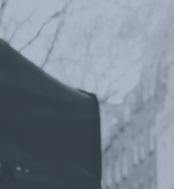
As I continue through my 20s and question what is next, I take comfort in this idea of sonder. But I also understand that it can be isolating. It reminds us that parts of our lives will always be untouchable and incomprehensible to others, and vice versa. So, back to me and my flatmates squished on our sofa. Possibly, despite sharing the TV and company, our brains are all quietly filled with different worries of what is to come, as well as a few anxieties that are the same. It doesn’t matter how many meals we have together, group trips or late night conversations we share, the complexity of who we are keeps us as concealed as the strangers I see on the streets. Our 20s will continue. We will probably face many of the same hurdles – and find many different ways to tackle them.
The Twenties are an era that everyone endures. The complexity of who we are may stay out of reach to everyone else, and possibly even to ourselves. Yet if we simplify this, we’re all relatable, following a path travelled by many before us. None of us are the same, but we are all human.









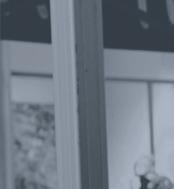

 Words By Colette Kaines Lang
Words By Colette Kaines Lang
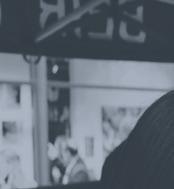
Editor: Sophia Smith
Deputy
Editor : Ursula Glendinning
Digital Editor: Helen March
Sub-Editor:
Zara WhistlerStands with stance that’s spelling power. Jaws of stone or abs of steel? Stride up stairs in search of number. Another name to list then feel.
This his space, his dominion, Each name and number conquered. There she sits, anticipation. On a bedside, why he wonders?
Does she stare so dark and deeply? With those emerald eyes she holds. Suddenly the leader follows As she draws his body close.
His breath a heavy sigh, But she said his lips were soft? Taken back by such a verse, His arms around like swaddling cloth.
What witchcraft to deceive him? As he held his head up high, Such praise, like her, should be beneath him. Exasperate, he faced the sky.
A wayward hand reached t’ward her neck, Yet control of him went wanting. Instead she locked her fingers Stole his grip, his thoughts confronted.
The world revolved around her, Subtle perfume, plaster ceiling. Every second lasts a lifetime Mindful senses still sent reeling.
Like wildfire flying through forest, Soon the flames had passed them by Leaving bodies scattered staring At the emeralds in her eyes.
He lay safe in arms surrounded By a lovers warm embrace. Still the embers slowly flicker Round the counters of her face.
Croft/Daniel Newell-Price



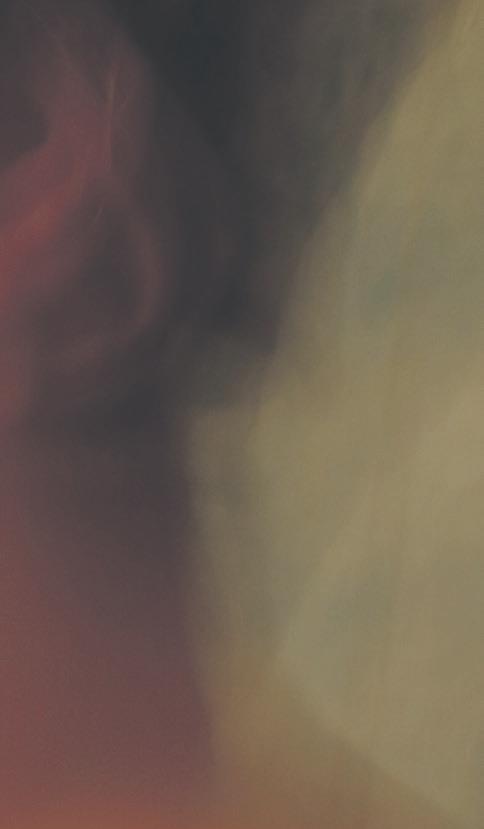




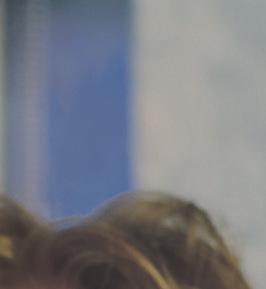














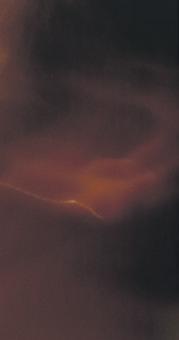

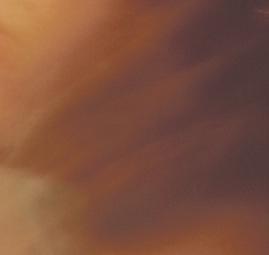



TRAVEL.
Editor: Finnuala BrettDeputy
Digital
Editor: Grace Burton Editor: Isobel EdmondsonSub-Editor:
Eve BairdMy father and mother migrated to the UK from Hong Kong and Malaysia, respectively, when they were young. Appearing as the land of opportunity, the UK became a country held so high in esteem as my parents imagined it to be utopia.
However, what greeted them immediately were racial slurs in school and in the workplace, shattering the idealised dream. The racial abuse was ceaseless, never-ending and exhausting. The constant fear of being racially attacked, either with snide remarks or physical fights, caused severe worry for my father and his siblings.
Adding onto the heightened stress was the all-too-common feeling of loneliness, as the answer to ‘where is home?’ occupied my father’s mind constantly. Once called home but was now great distances away was Hong Kong, whilst the bustling city of London, was in reality, unwelcoming and uncaring, appearing like the root of all his anxiety.
This same feeling also presented itself in my mother as she packed her bags and flew across the continent by herself, spurred on by her determination to obtain a better future, ignoring the growing apprehension that gnawed away. Decades later, calling the UK home feels natural to my parents, with friendships built and a family created.
I was brought up in Malaysia for the first two years of my life, attending nursery there and learning Mandarin as my native language.
I began to think of this country as my homeland, but this was short-lived as it was decided that I should grow up in London; thus, the deterioration of my relationship with my heritage began.
In an attempt to preserve both the connections to my family overseas as well as my early childhood, my family took an annual summer trip to Malaysia. The intimacy created between my early memories and this country was longing to be rediscovered and reconnected; however, the growing Britishness in me was unfamiliar with sharing my identity with my ethnicity and consumed my adolescent self entirely.

I recognise now that I had a warped perception of what being British meant and didn’t realise until later in life that despite having a different nationality and heritage, the two were in fact compatible with one another. Every part of me wanted to remain in London each summer. From the unbearable humidity that soaked the air from the monsoon season to the pesky mosquitoes, desperate for a
BY LOUISE CHEUNG WORDS“...thus, the deterioration of my relationship with my heritage began.”The Croft / Louise Cheung
taste of your blood, it took a long while to acclimatise to this tropic, alien climate that belonged to Malaysia. I spent my days lounging in my grandparent’s house, thankful for the invention of the aircon, counting down the days until I could see my friends in London again.
As a child absorbed by her own wants, I never truly appreciated the time spent with my grandparents, who spoiled me daily with fresh coconuts and sweet treats, fresh from the local market. I instead wondered why I was forced to be in a foreign country that was far too hot and didn’t speak English as a first language.
“My ignorance blinded me, and Malaysia slowly detached itself from my core identity, turning into a distant memory, a shadow of a former life.”
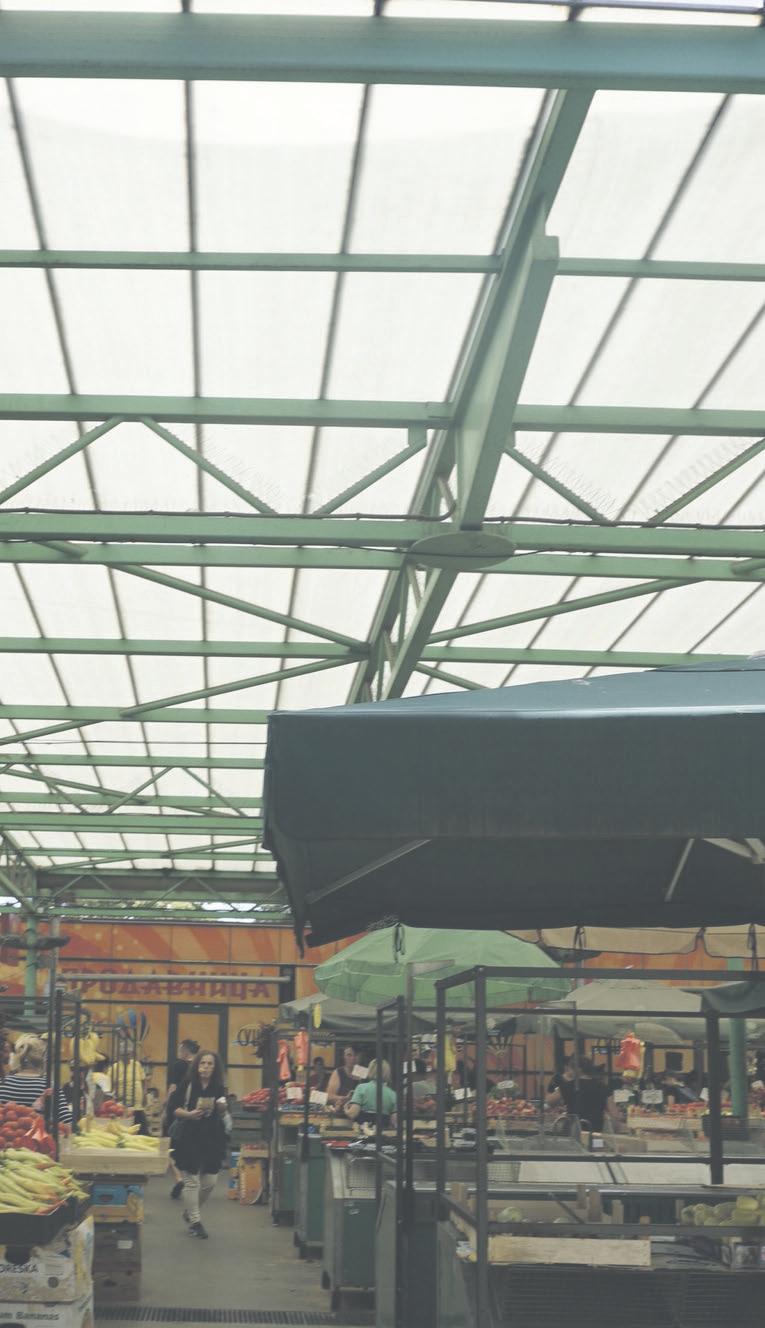
The sad truth is that to this day, Malaysia remains just a country to me, with no real sense of belonging attached to it. Unsure of my identity but eager to fit in somewhere, I subconsciously buried any good memories of Malaysia, and with it, my own ethnic origins. The yearly trips gradually stopped, which only continued to widen the great gulf between me and this country.
Now as an adult, I can see the emotional cracks that increased in my relationship with my grandparents, worsening over the years I didn’t return to Malaysia. What remains are fragments involving one-minute phone calls (which involve feeble attempts at speaking broken Mandarin and English to each other) and yearly ‘happy birthdays’ over WhatsApp.
I am painfully aware and incredibly ashamed of my lack of connection to my grandparents who did nothing but love me, communicating this through home-cooked meals when language barriers were particularly difficult, and my parents, who suffered severe abuse for being a different race to the majority, only for me to abandon my own culture by choice.

“Having not been back since I was fourteen, I plan to visit Malaysia next summer in the hopes to rekindle the relation- ship with my grandparents and in time, engage with my herit- age that I once found uncom- fortable about myself. “
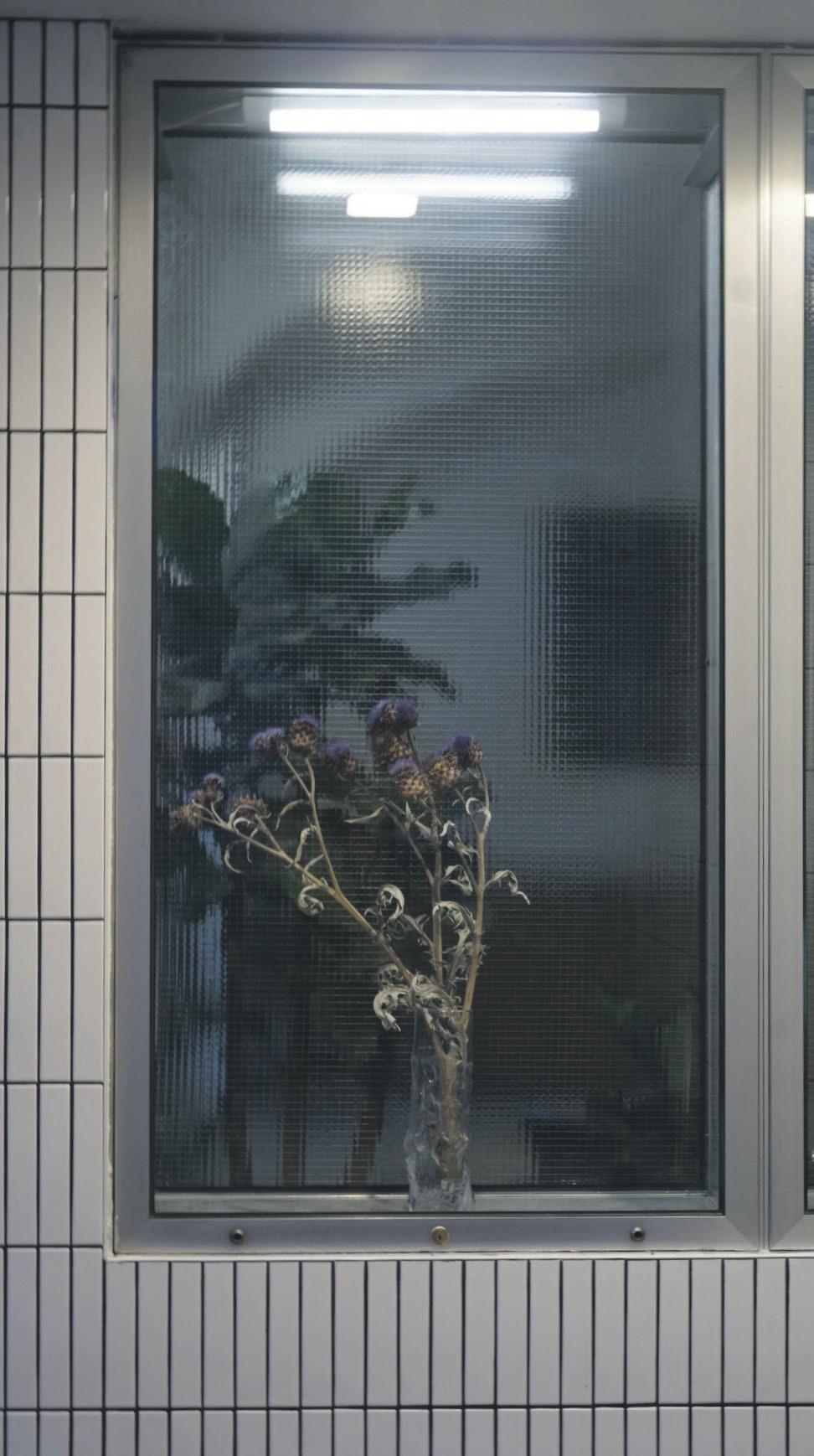
Have you ever seen someone somewhere you’re not expecting them? It is always a strange experience and sometimes out of context it is even difficult to recognise them.
Seeing a teacher outside of school was always a shocking experience as a child, realising they too do a weekly shop and trawl their trolley through supermarket aisles just didn’t make sense to me.
Taking advantage of being out of context is also how many celebrities hide in plain sight. Who is expecting to see a TV star on the train? This is certainly the case when you see someone you know when travelling. My own grandparents once shared an airport golf buggy through Gatwick Airport following a flight from Perth Australia with BAFTA award winning actress Miriam Margolyes and didn’t realise it was her until they left the airport. Many people travel to explore more diverse cultures and expand their connections by meeting new people. How is it possible then that even on the other side of the world you can find people with a link to home?
This is known as the six degrees of separation and suggests that through various relationships, friendships and acquaintances you will know someone who knows someone and eventually one can find a common thread with every new person they meet.
Even with the world’s population now growing to near eight billion this phenomenon is only becoming more obvious through features such as Instagram’s mutual followers feature.
Now when travelling if any Instagram user adds someone new, they can immediately see anyone they have in common, (location being no barrier) something that previously may not have been discovered until much later conversations and sometimes not at all.
As travel becomes cheaper and further accessible more and more individuals will be meeting increased numbers of people from further afield, increasing the chances of running in to them again.
Having the opportunity to travel to popular locations also makes it more likely that you will run in to someone you know or a connection that fits with the six degrees of separation. For example, even as I write this, I have two friends on weekends away in Paris - neither of whom knows the other and who have almost certainly walked past each other without realising their mutual connection.
TRAVEL.
Editor: Finnuala Brett
Deputy Editor: Grace Burton
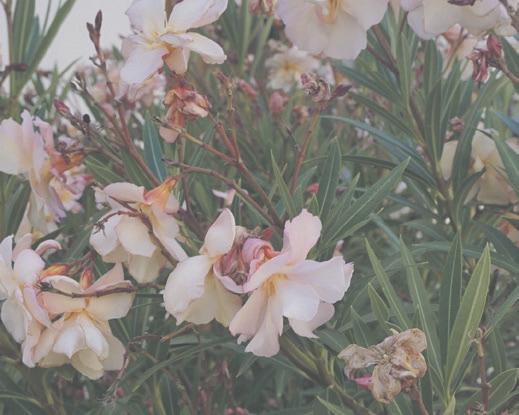
Digital Editor: Isobel Edmondson
Sub-Editor: Eve Baird
Words By Eve Baird“There is a saying that everyone in the world is only five people away from any other individual.”
Travel gives you the opportunity to explore the world and expand your connections, but also to explore your connections to home.The Croft / Finnuala Brett
The Croft. @thecroftmagazine
Thecroft.epigram@gmail.com
 Croft/ Adam Liu
Croft/ Adam Liu